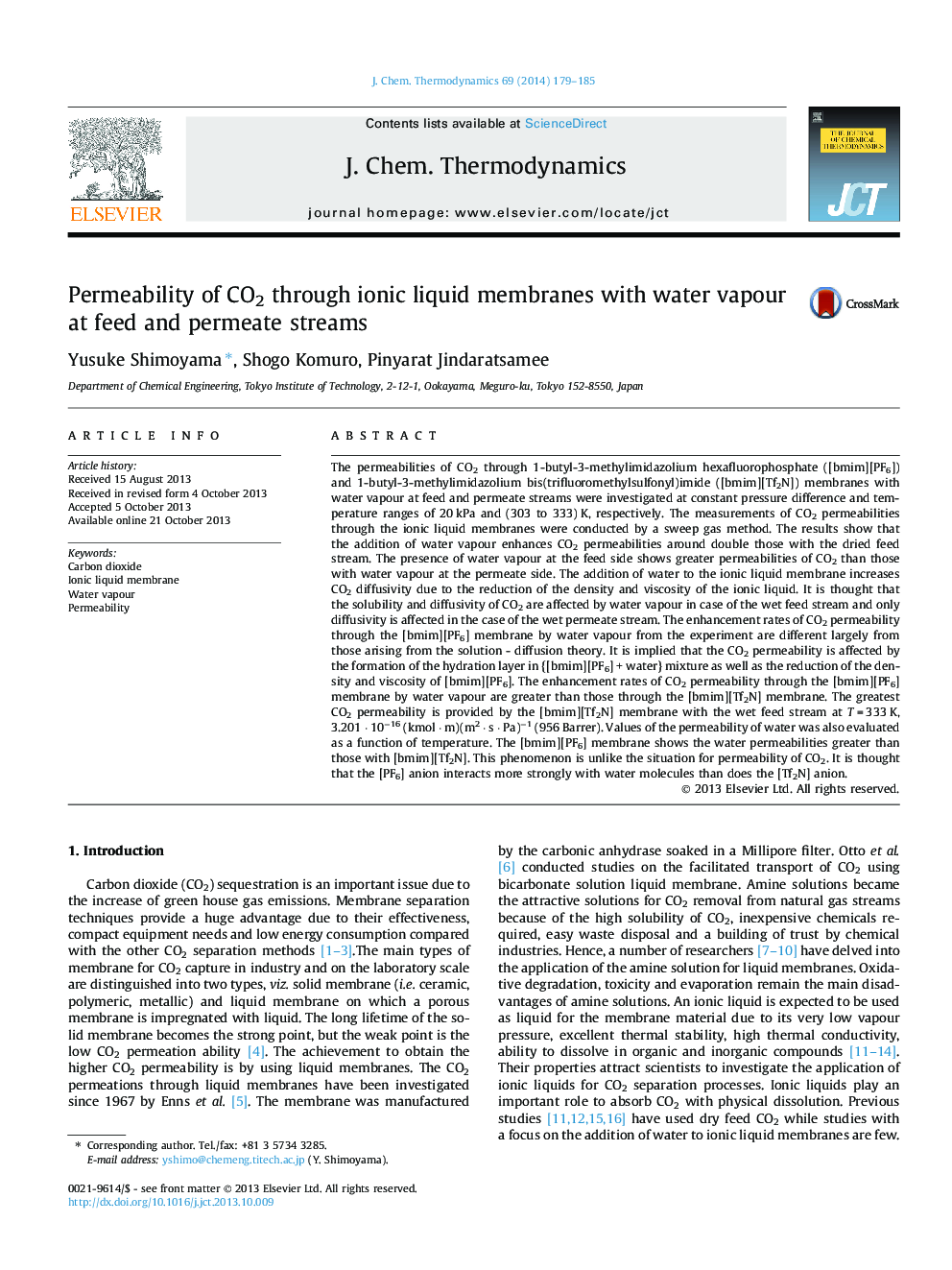| Article ID | Journal | Published Year | Pages | File Type |
|---|---|---|---|---|
| 215438 | The Journal of Chemical Thermodynamics | 2014 | 7 Pages |
•The presence of water in ionic liquid membranes can enhance the CO2 permeabilities.•Increase of CO2 permeabilities with water vapour is related to the diffusion enhancement.•Hydration formation in ionic liquid membrane is discussed for the CO2 diffusion enhancement.
The permeabilities of CO2 through 1-butyl-3-methylimidazolium hexafluorophosphate ([bmim][PF6]) and 1-butyl-3-methylimidazolium bis(trifluoromethylsulfonyl)imide ([bmim][Tf2N]) membranes with water vapour at feed and permeate streams were investigated at constant pressure difference and temperature ranges of 20 kPa and (303 to 333) K, respectively. The measurements of CO2 permeabilities through the ionic liquid membranes were conducted by a sweep gas method. The results show that the addition of water vapour enhances CO2 permeabilities around double those with the dried feed stream. The presence of water vapour at the feed side shows greater permeabilities of CO2 than those with water vapour at the permeate side. The addition of water to the ionic liquid membrane increases CO2 diffusivity due to the reduction of the density and viscosity of the ionic liquid. It is thought that the solubility and diffusivity of CO2 are affected by water vapour in case of the wet feed stream and only diffusivity is affected in the case of the wet permeate stream. The enhancement rates of CO2 permeability through the [bmim][PF6] membrane by water vapour from the experiment are different largely from those arising from the solution - diffusion theory. It is implied that the CO2 permeability is affected by the formation of the hydration layer in {[bmim][PF6] + water} mixture as well as the reduction of the density and viscosity of [bmim][PF6]. The enhancement rates of CO2 permeability through the [bmim][PF6] membrane by water vapour are greater than those through the [bmim][Tf2N] membrane. The greatest CO2 permeability is provided by the [bmim][Tf2N] membrane with the wet feed stream at T = 333 K, 3.201 ⋅ 10−16 (kmol · m)(m2 · s · Pa)−1 (956 Barrer). Values of the permeability of water was also evaluated as a function of temperature. The [bmim][PF6] membrane shows the water permeabilities greater than those with [bmim][Tf2N]. This phenomenon is unlike the situation for permeability of CO2. It is thought that the [PF6] anion interacts more strongly with water molecules than does the [Tf2N] anion.
